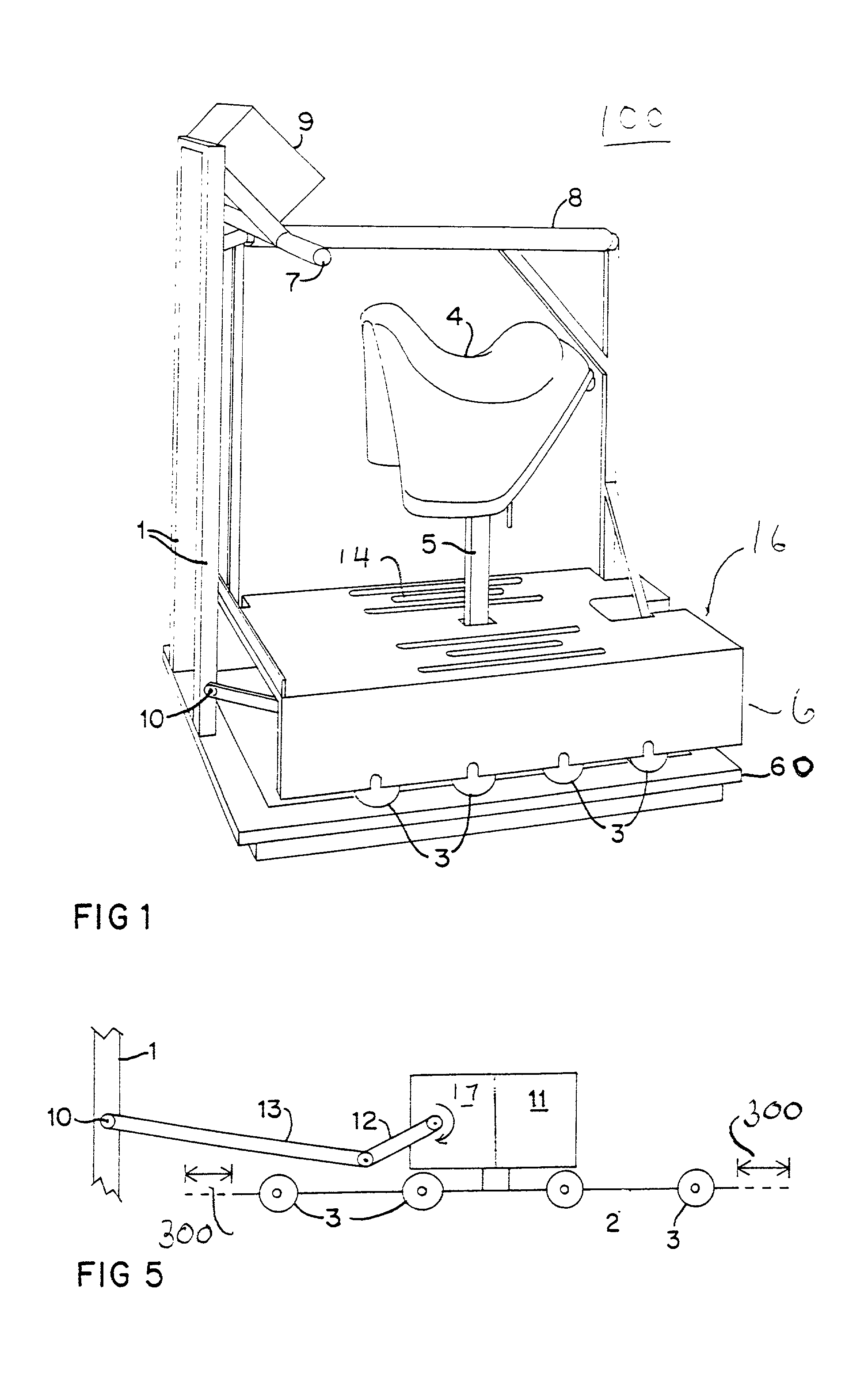Method and device for continuous passive lumbar motion (CLMP) for back exercise
- Summary
- Abstract
- Description
- Claims
- Application Information
AI Technical Summary
Benefits of technology
Problems solved by technology
Method used
Image
Examples
Embodiment Construction
[0033] There are a number of basically equivalent ways of practicing the method of the present invention. In what follows the method will be discussed in terms of the Preferred Embodiment device of the present invention, which is illustrated in the Figures. The method of the Preferred Embodiment is determined in part by the device and will be described along with the device.
[0034] The overall appearance of the Preferred Embodiment device 100 of the present invention is shown in the perspective views of FIG. 1 and FIG. 2. The latter shows a person 200 properly mounted in the saddle-seat 4 of the device. Note the stance of the person 200 and in particular how his shoulders 201, hips 202, and ankles 222 all lie substantially in the same plane 207. Note further, with reference to FIG. 2 the shape of the saddle-seat 4, which is intended to induce the thighs 204 to form an angle of approximately 135 degrees with the upper part of the body 205. The is considered to give the proper vertical...
PUM
 Login to View More
Login to View More Abstract
Description
Claims
Application Information
 Login to View More
Login to View More - R&D
- Intellectual Property
- Life Sciences
- Materials
- Tech Scout
- Unparalleled Data Quality
- Higher Quality Content
- 60% Fewer Hallucinations
Browse by: Latest US Patents, China's latest patents, Technical Efficacy Thesaurus, Application Domain, Technology Topic, Popular Technical Reports.
© 2025 PatSnap. All rights reserved.Legal|Privacy policy|Modern Slavery Act Transparency Statement|Sitemap|About US| Contact US: help@patsnap.com



